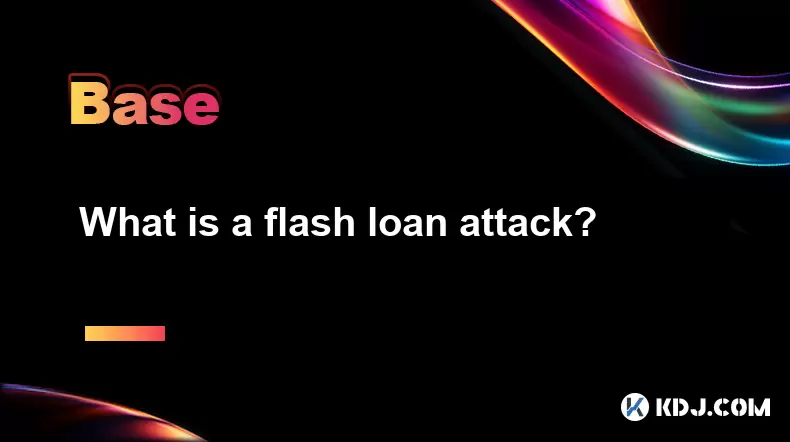-
 Bitcoin
Bitcoin $118,209.3536
1.16% -
 Ethereum
Ethereum $3,151.7546
5.98% -
 XRP
XRP $2.9277
2.35% -
 Tether USDt
Tether USDt $1.0000
0.00% -
 BNB
BNB $689.7099
1.26% -
 Solana
Solana $163.4270
1.91% -
 USDC
USDC $1.0000
0.02% -
 Dogecoin
Dogecoin $0.1983
3.74% -
 TRON
TRON $0.3008
0.51% -
 Cardano
Cardano $0.7435
2.86% -
 Hyperliquid
Hyperliquid $47.6547
-0.48% -
 Stellar
Stellar $0.4625
2.79% -
 Sui
Sui $3.9921
2.71% -
 Chainlink
Chainlink $16.0608
4.23% -
 Hedera
Hedera $0.2348
1.56% -
 Bitcoin Cash
Bitcoin Cash $496.6985
1.25% -
 Avalanche
Avalanche $21.9038
5.41% -
 UNUS SED LEO
UNUS SED LEO $8.8356
-1.88% -
 Shiba Inu
Shiba Inu $0.0...01364
5.31% -
 Toncoin
Toncoin $3.1102
4.35% -
 Litecoin
Litecoin $95.9756
3.59% -
 Polkadot
Polkadot $4.0925
5.78% -
 Monero
Monero $333.7622
-1.44% -
 Uniswap
Uniswap $9.1968
2.25% -
 Bitget Token
Bitget Token $4.6378
6.23% -
 Pepe
Pepe $0.0...01282
6.77% -
 Dai
Dai $1.0002
0.03% -
 Ethena USDe
Ethena USDe $1.0005
0.00% -
 Aave
Aave $329.9143
4.49% -
 Bittensor
Bittensor $441.4995
6.89%
What is a flash loan attack?
Flash loans enable borrowing large crypto sums without collateral, repaid within the same transaction, often exploited for price manipulation or protocol exploits.
Jul 06, 2025 at 03:08 pm

Understanding Flash Loans in DeFi
Flash loans are a unique feature of decentralized finance (DeFi) that allow users to borrow large amounts of cryptocurrency without any collateral, as long as the loan is repaid within the same transaction block. This mechanism is made possible by smart contracts, which ensure that if the borrower fails to repay the loan or meet specific conditions, the entire transaction is reverted as if it never happened.
These loans are particularly useful for arbitrage opportunities, debt refinancing, and other advanced trading strategies. However, their permissionless nature and the ability to execute complex transactions in a single block have also opened the door to malicious actors seeking to exploit vulnerabilities in DeFi protocols.
Flash loans enable borrowing without collateral, provided the funds are returned in the same transaction.
What Constitutes a Flash Loan Attack?
A flash loan attack occurs when an attacker uses a flash loan to manipulate market prices, drain liquidity from a protocol, or exploit smart contract bugs. These attacks typically involve multiple steps executed in one atomic transaction, making them difficult to detect and mitigate after the fact.
The core idea behind such an attack is to borrow a large amount of tokens via a flash loan, use those tokens to influence a system (e.g., price oracles), then perform another action (like draining funds) before repaying the loan—all within the same block.
In a flash loan attack, attackers leverage borrowed funds to exploit system weaknesses in a single transaction.
Common Techniques Used in Flash Loan Attacks
Price Manipulation: By flooding a decentralized exchange with trades using flash loan funds, attackers can temporarily skew token prices on automated market makers (AMMs). They then take advantage of this discrepancy across different platforms.
Reentrancy Exploits: Some attacks combine flash loans with reentrancy techniques, where a malicious contract repeatedly calls a vulnerable function to drain funds before the transaction concludes.
Oracle Manipulation: If a DeFi protocol relies on external price feeds, attackers can manipulate these oracles using flash loans to trick the system into approving bad loans or liquidations.
Smart Contract Bugs: Vulnerabilities like incorrect logic handling, unchecked return values, or improper validations can be exploited when large sums are injected temporarily through a flash loan.
Attackers often manipulate prices, exploit reentrancy flaws, or abuse oracle data during flash loan attacks.
Step-by-Step Execution of a Flash Loan Attack
Borrowing Funds: The attacker initiates a flash loan from a platform like Aave or dYdX, requesting a substantial amount of a particular token.
Executing Arbitrage or Manipulation: With the borrowed tokens, the attacker performs actions like swapping on a decentralized exchange to alter the price of a token significantly.
Exploiting Protocol Logic: The manipulated price may trigger faulty logic in another DeFi protocol—such as overvaluing collateral—allowing the attacker to withdraw more funds than they should be entitled to.
Repurchasing Tokens: After extracting value, the attacker buys back the original tokens at a lower price (if applicable) to repay the flash loan.
Repaying the Loan: As long as the total amount borrowed plus fees is returned within the same transaction, the blockchain accepts the operation as valid.
Each step must be completed within the same transaction to avoid defaulting on the flash loan.
Real-World Examples of Flash Loan Attacks
Several high-profile incidents have highlighted the dangers of flash loan attacks:
bZx Incident (2020): In two separate attacks, hackers used flash loans to manipulate the price of ETH on KyberSwap and then exploited the bZx lending protocol to drain over $1 million worth of assets.
Cheese Bank Heist (2021): An attacker used a flash loan to manipulate the internal pricing of Cheese Bank's vaults, allowing them to mint excessive rewards and drain the protocol’s funds.
Value Finance Exploit (2021): A hacker executed a multi-chain flash loan attack, manipulating cross-chain price feeds to steal over $6 million from the Value Finance protocol.
Historical exploits show how flash loans can be weaponized against poorly secured DeFi systems.
Protecting Against Flash Loan Attacks
Protocols can implement several defensive measures to reduce the risk of being targeted:
Time-Weighted Average Price (TWAP) Oracles: Using TWAP instead of instantaneous price data makes short-term manipulation harder.
Transaction Reordering Resistance: Ensuring that critical operations cannot be front-run or sandwiched by large trades.
Rate Limiting and Slippage Controls: Implementing tighter slippage thresholds and limiting the size of allowable trades helps prevent manipulation.
Multi-Block Validation: Introducing delays between key actions ensures that all operations cannot be completed in a single transaction.
Audits and Bug Bounties: Regular security audits and incentivized bug bounty programs help identify and patch vulnerabilities before they are exploited.
Robust oracle design and transaction validation mechanisms are essential for mitigating flash loan risks.
Frequently Asked Questions
Q: Can flash loans be used legally?
Yes, flash loans are a legitimate financial tool in DeFi when used for arbitrage, portfolio rebalancing, or other non-malicious purposes. Their misuse arises only when combined with exploitative tactics targeting vulnerabilities.
Q: Are all DeFi protocols vulnerable to flash loan attacks?
Not all, but many DeFi protocols that rely on real-time pricing data or unguarded logic are potentially at risk. Protocols that implement robust security practices and delay-sensitive validations are less susceptible.
Q: How do developers detect past flash loan attacks?
Forensic analysis of on-chain transactions, reviewing event logs, and tracking unusual spikes in token transfers or price deviations can help identify whether a flash loan was involved in an exploit.
Q: Is it possible to reverse a flash loan attack once it happens?
Since the transaction is confirmed and executed atomically, reversing it post-factum is nearly impossible unless the attacker voluntarily returns the stolen funds or a governance proposal initiates a rollback through a hard fork.
Disclaimer:info@kdj.com
The information provided is not trading advice. kdj.com does not assume any responsibility for any investments made based on the information provided in this article. Cryptocurrencies are highly volatile and it is highly recommended that you invest with caution after thorough research!
If you believe that the content used on this website infringes your copyright, please contact us immediately (info@kdj.com) and we will delete it promptly.
- Animal Memecoins Roar Back: HEGE, BONK, and the Solana Pack Lead the Charge
- 2025-07-16 20:50:13
- Pumpfun's PUMP Token: SOL Transfers, Buybacks, and the Wild West of Meme Coins
- 2025-07-16 20:30:13
- Trump, HTX, and USDT: Riding the Crypto Wave in 2025
- 2025-07-16 20:50:13
- SPX6900, Meme Coins, and the Quest for 1000x Gains: A New Yorker's Take
- 2025-07-16 20:30:13
- Eclipse Airdrop and Token Supply: Navigating the Crypto Landscape
- 2025-07-16 18:50:13
- Solana Price, Zebec Network, and Remittix: Decoding the Crypto Signals
- 2025-07-16 18:30:13
Related knowledge

What is the Bitcoin dominance index
Jul 12,2025 at 10:35pm
Understanding the Bitcoin Dominance IndexThe Bitcoin Dominance Index, often abbreviated as BTC.D, is a metric used to measure Bitcoin's market capital...

What is the Bitcoin dominance index
Jul 11,2025 at 04:29am
What is the Bitcoin Dominance Index?The Bitcoin Dominance Index is a metric used to gauge Bitcoin's market capitalization relative to the total market...

Can crypto be a hedge against inflation
Jul 14,2025 at 12:21am
Understanding the Concept of Hedging Against InflationInflation refers to the general increase in prices and fall in the purchasing value of money ove...

Can crypto be a hedge against inflation
Jul 12,2025 at 12:07pm
Understanding the Role of Blockchain in Decentralized Finance (DeFi)Blockchain technology serves as the backbone of decentralized finance, offering a ...

What are account abstraction wallets
Jul 13,2025 at 01:43am
Understanding the Concept of Account AbstractionAccount abstraction is a term frequently used in the Ethereum ecosystem, particularly within discussio...

What does "gas limit" vs "gas price" mean
Jul 13,2025 at 04:00am
Understanding the Basics of Gas in Blockchain TransactionsIn the Ethereum and other EVM-compatible blockchains, every transaction requires computation...

What is the Bitcoin dominance index
Jul 12,2025 at 10:35pm
Understanding the Bitcoin Dominance IndexThe Bitcoin Dominance Index, often abbreviated as BTC.D, is a metric used to measure Bitcoin's market capital...

What is the Bitcoin dominance index
Jul 11,2025 at 04:29am
What is the Bitcoin Dominance Index?The Bitcoin Dominance Index is a metric used to gauge Bitcoin's market capitalization relative to the total market...

Can crypto be a hedge against inflation
Jul 14,2025 at 12:21am
Understanding the Concept of Hedging Against InflationInflation refers to the general increase in prices and fall in the purchasing value of money ove...

Can crypto be a hedge against inflation
Jul 12,2025 at 12:07pm
Understanding the Role of Blockchain in Decentralized Finance (DeFi)Blockchain technology serves as the backbone of decentralized finance, offering a ...

What are account abstraction wallets
Jul 13,2025 at 01:43am
Understanding the Concept of Account AbstractionAccount abstraction is a term frequently used in the Ethereum ecosystem, particularly within discussio...

What does "gas limit" vs "gas price" mean
Jul 13,2025 at 04:00am
Understanding the Basics of Gas in Blockchain TransactionsIn the Ethereum and other EVM-compatible blockchains, every transaction requires computation...
See all articles

























































































